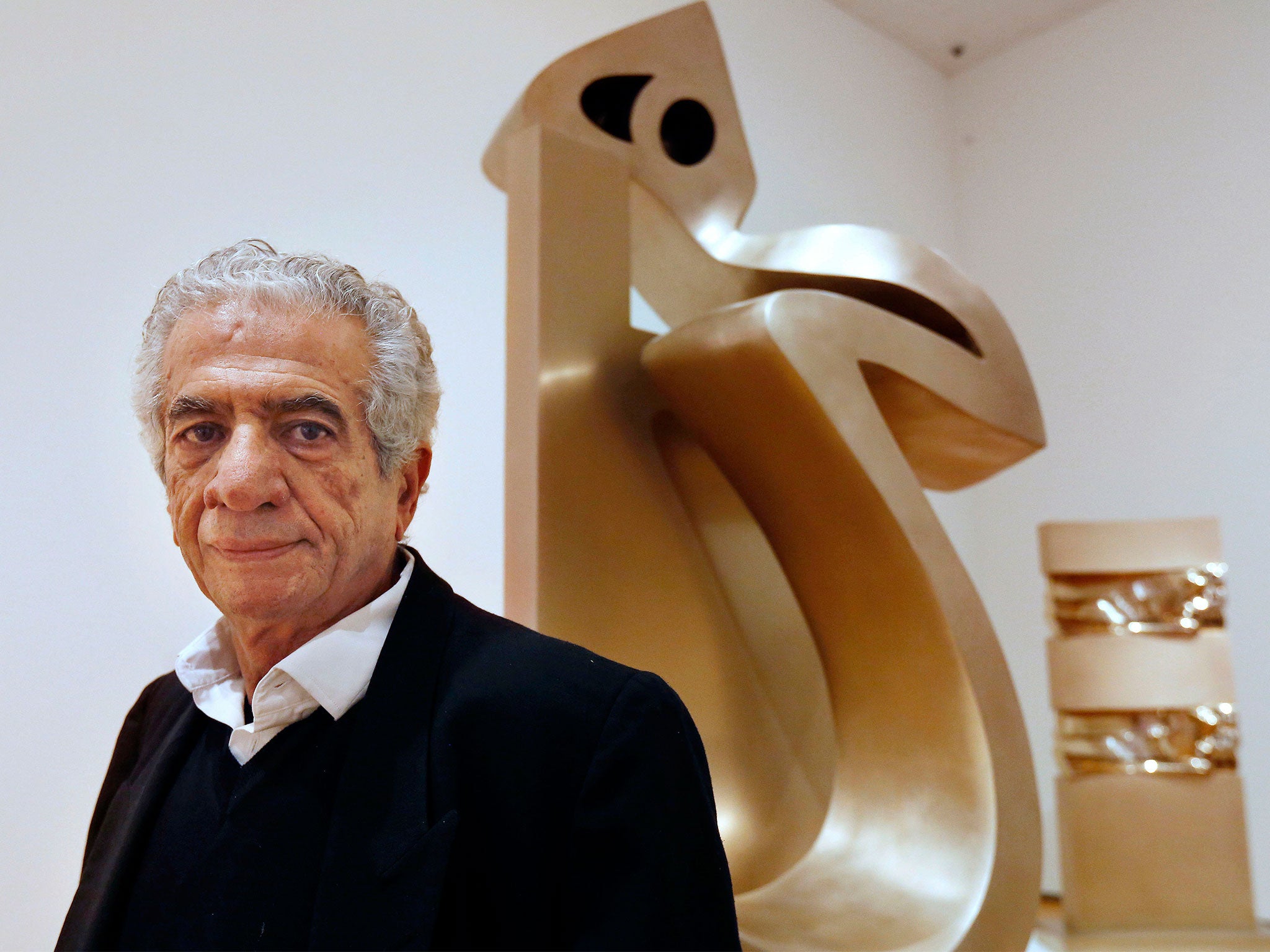Iranian artist Parviz Tanavoli accused of 'disturbing public peace' with nude artworks
The world-renowned artist was due to give a talk in London when he was confonted by border officials and banned from leaving the country

Your support helps us to tell the story
From reproductive rights to climate change to Big Tech, The Independent is on the ground when the story is developing. Whether it's investigating the financials of Elon Musk's pro-Trump PAC or producing our latest documentary, 'The A Word', which shines a light on the American women fighting for reproductive rights, we know how important it is to parse out the facts from the messaging.
At such a critical moment in US history, we need reporters on the ground. Your donation allows us to keep sending journalists to speak to both sides of the story.
The Independent is trusted by Americans across the entire political spectrum. And unlike many other quality news outlets, we choose not to lock Americans out of our reporting and analysis with paywalls. We believe quality journalism should be available to everyone, paid for by those who can afford it.
Your support makes all the difference.Prominent Iranian sculptor Parviz Tanavoli has been accused of “disturbing the public peace” and could face criminal charges because of his nude artworks, he has claimed, after being barred from leaving the country to visit London.
Mr Tanavoli, who is renowned for his signature bronze sculptures, was due to give a talk at the British Museum before he was confronted by Iranian authorities at Tehran Airport last week.
The artist’s passport was confiscated by border officials and he was banned from flying as a result of his published book “European Women in Persian Houses”.
“I learnt this morning in court that the police had accused me of publishing false information and disturbing the public peace,” he told ILNA, after visiting Iran's special court for culture and media.
“They told me my sculptures are examples of disturbing the public peace,”
Mr Tanavoli’s book is a study of images from Iran’s Safavid and Qajar eras and contains some nudes – the displays of which are forbidden in the conservative Islamic republic.
“I have worked for 50 years and so far none of my works have had any problems,” Tanavoli said, adding that the accusations came after his works had been on display at several venues around Tehran.
Mr Tanavoli was one of the pioneers of the Saqqakhaneh school, a neo-traditionalist movement which began in the 1960s and takes Persian and Shiite folk themes as its inspiration. His bronze work 'The Wall' ('Oh, Persepolis') fetched $2.84 million at auction in 2008, setting the record at the time for the most expensive Iranian artwork.
The artist holds dual Iranian-Canadian nationality, spending half the year in Iran and the other half in Canada. His artworks are displayed in major museums worldwide including New York's Metropolitan Museum of Art and Museum of Modern Art, as well as the British Museum.
He has run into difficulties with the Iranian authorities in the past, with pieces of his artwork confiscated more than a decade ago during a dispute over his house in Tehran. He is still said to be fighting to get the pieces back.
Join our commenting forum
Join thought-provoking conversations, follow other Independent readers and see their replies
Comments